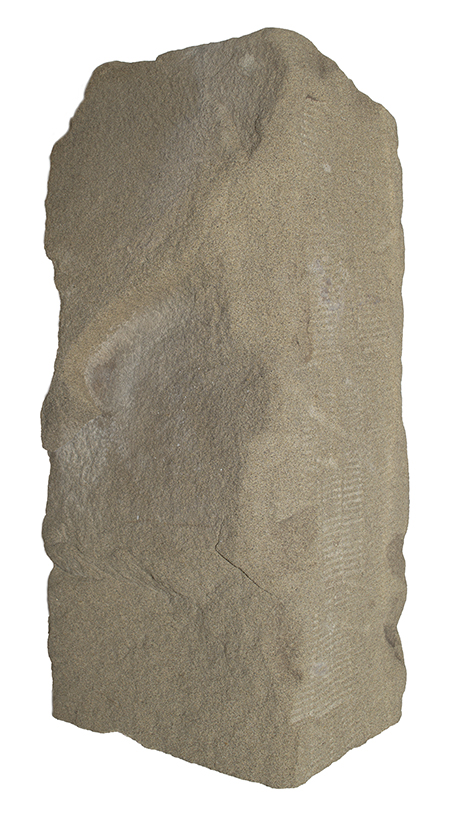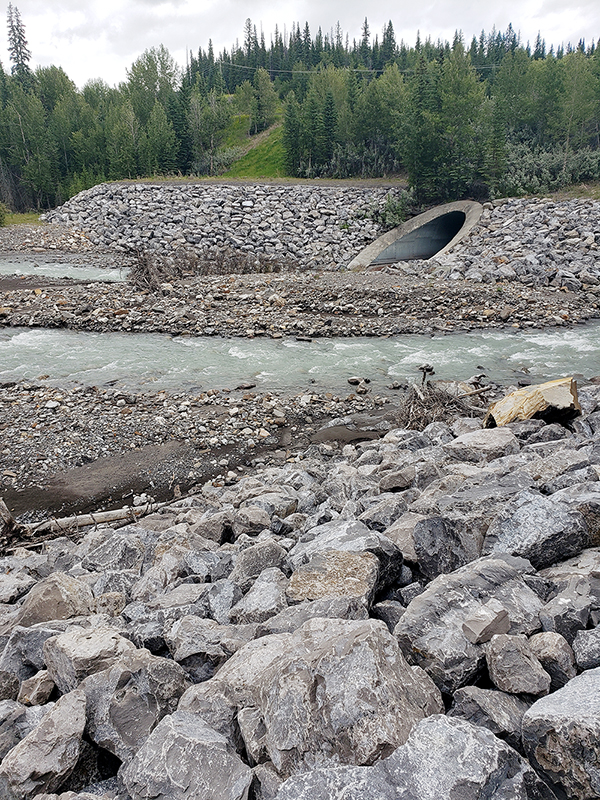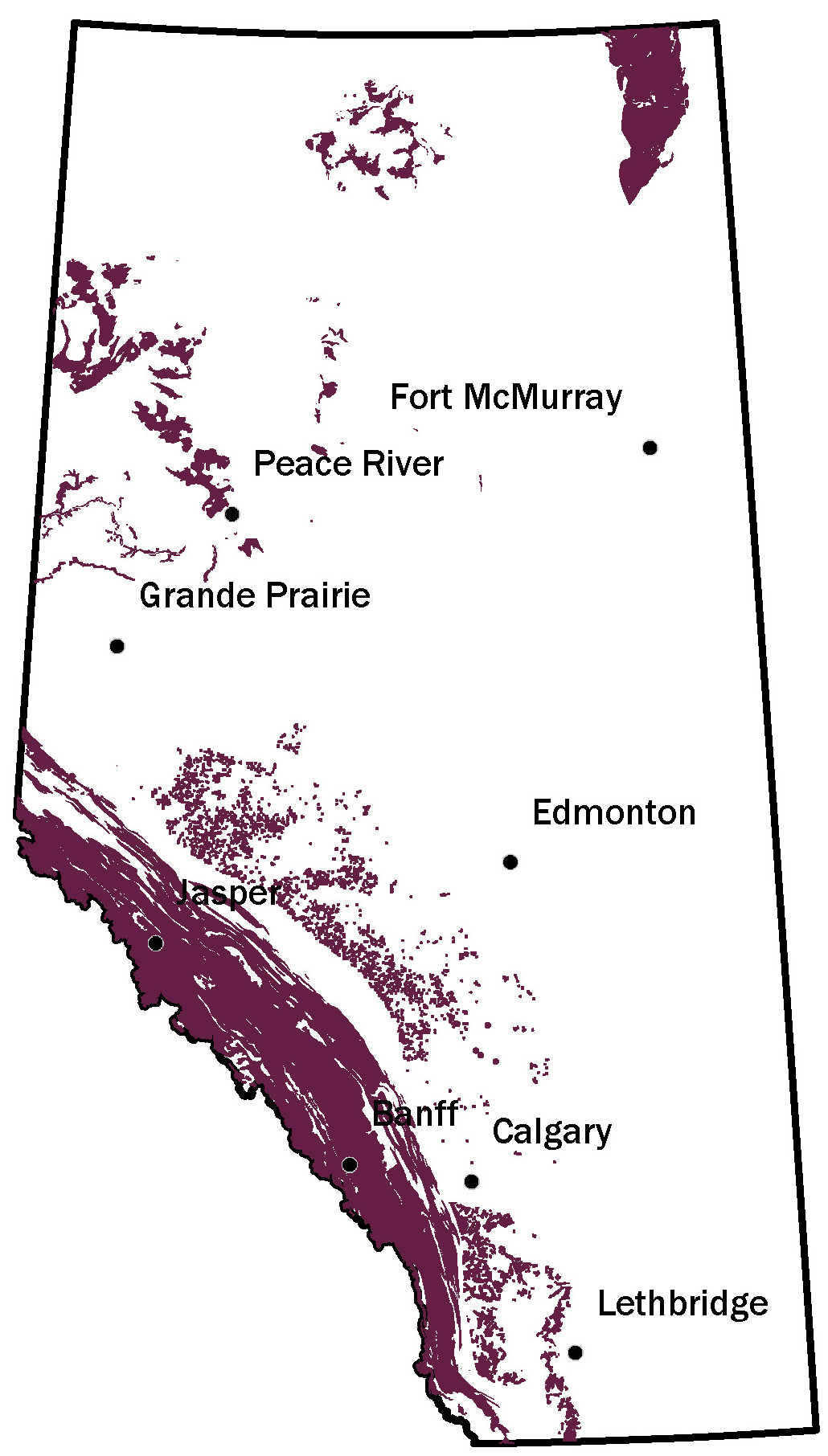![]()

A 35 cm tall block of building stone made of sandstone from the Paskapoo Formation

Local limestone boulders are used for erosion control to protect the bridge and riverbanks where Highway 11 crosses the Bighorn River, Alberta
Composition
Any kind of rock can be a source of stone. Each rock will have different physical and chemical characteristics which determines its suitability for a given purpose.
Age and Formation
In Alberta, sources of stone include 1600 - 2500 million year old granite of the Canadian Shield (not produced commercially), 56 - 245 million year old sandstone, 227 - 252 million year old siltstone, and 331 to 372 million year old limestone.
Important properties
When assessing a stone for a given purpose the following characteristics are considered: strength, hardness, resistance to weathering, binding properties, resistance to friction, size of block that can be produced, colour, grain size, texture, pattern, homogeneity, and impurities.
Uses
Stone is be used in constructing buildings, countertops, and as decorative landscaping features. It is used for monuments and other works of art, and even kitchen tools like mortars and pestles. Although humans have only been around for about 2 million years, the oldest stone tools are over 3.3 million years old indicating that our hominid relatives used stone. Stone production contributed more to Alberta's economy in the past than it does today.
It’s a Fact!
The Alberta Legislature Building is made of Paskapoo Sandstone from a quarry that was located between Calgary and Cochrane.
Discover!
Restoring the Alberta Legislature Building
Historic Sandstone Quarries in Calgary
Where to find stone
